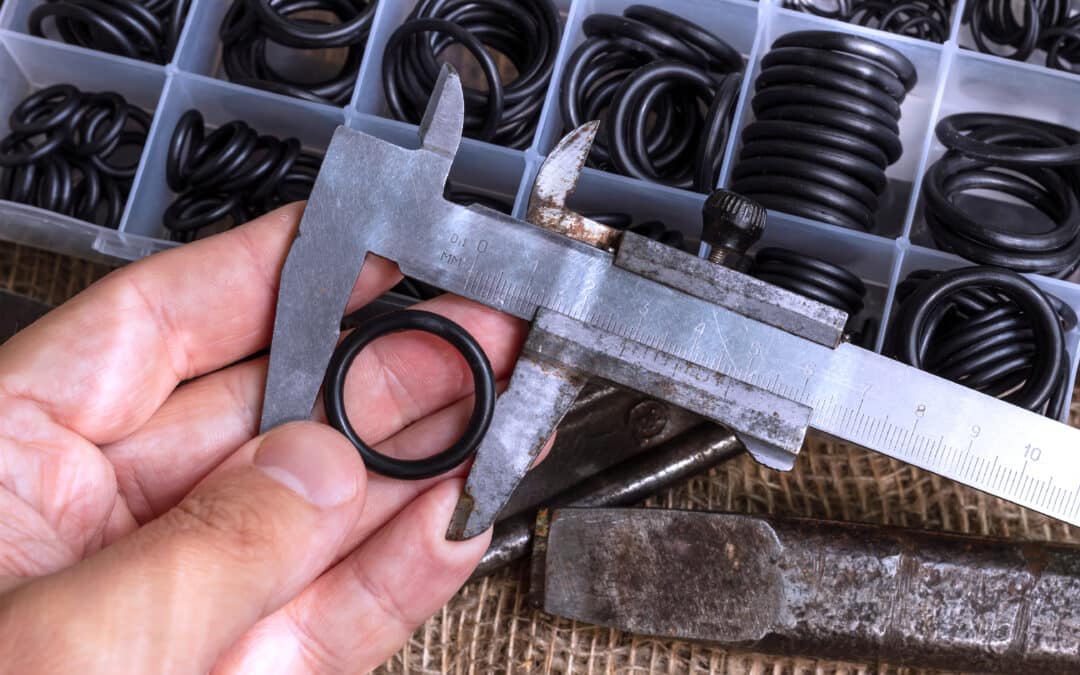It’s difficult to get a proper replacement for your O-rings without knowing how to measure them. O-rings are an important component used in a wide range of industries, from aerospace to plumbing. These small, circular rubber rings are used to create a reliable seal between two parts, preventing leaks, and ensuring smooth operations. However, getting a perfect fit to get a reliable seal depends a lot on accurate measurements. We’ll look at the proper way to measure O-rings to ensure the best performance and avoid any potential trouble.
Importance of Precise Measurements
It’s important to know that accurate measurements for O-rings are critical, as even a small margin of error can lead to big issues. An O-ring that is too loose may fail to form a proper seal, resulting in leaks, while one that is too tight could cause excessive friction and wear, leading to premature failure. Therefore, it’s important these measurements are taken as accurately as possible to select the appropriate O-ring for your application.
Tools for Measuring O-Rings
Proper technique isn’t the only thing that you’ll need to know when measuring an O-ring. Knowing the right tools to use is just as important to the process. The most common tools used include:
Calipers: Digital calipers are the most commonly used tool for O-ring measurement. They provide very accurate measurements and are easy to use, allowing you to measure the inner and outer diameter of the ring
O-Ring Sizing Cone: A sizing cone is a cone-shaped tool designed to help measure the inner diameter of O-rings more accurately, especially for larger-sized rings.
5-Step O-Ring Measurement Guide
1. Cleanliness is Crucial: Make sure to clean the O-ring of any dirt, debris, or any substance as it may interfere with getting accurate measurements
2. Measure the Inner Diameter (ID): Place the O-ring on a flat surface and gently press the inner edges together. Use your calipers to sizing cone to measure the distance between one point of the inner edge and its opposite point. Record this measurement as the O-ring’s inner diameter (ID).
3. Measure the Cross-Section Diameter (CS): This refers to the thickness of the O-ring. Use calipers to measure the thickness of the ring at its thickest point. To get a more accurate measurement, measure the thickness multiple times around the ring and use the average of the values. Record the average value as the O-ring’s cross-section diameter (OD).
4. Verify the Tolerance Range: O-rings come with specific tolerance ranges, denoting the acceptable deviation from the stated dimensions. Check the manufacturer’s guidelines to ensure your measurements fall within the specified tolerance range.
5. Consider Material Compatibility: While measuring O-rings, consider the material used, as different materials possess varying levels of elasticity and hardness. Selecting the appropriate material is crucial for specific applications and environments.
The proper way to measure O-rings is an essential skill that ensures a secure seal and optimal performance across various applications. By using the right tools, adhering to precise measurement techniques, and considering material compatibility, you can confidently select the perfect O-ring for your needs.
You can purchase your O-rings at Simplex, the premiere distributor of premium industrial engineering parts in the Philippines. Simplex offers the most extensive product selection and even their expertise. Visit the Simplex online shop and find your perfect O-ring.

